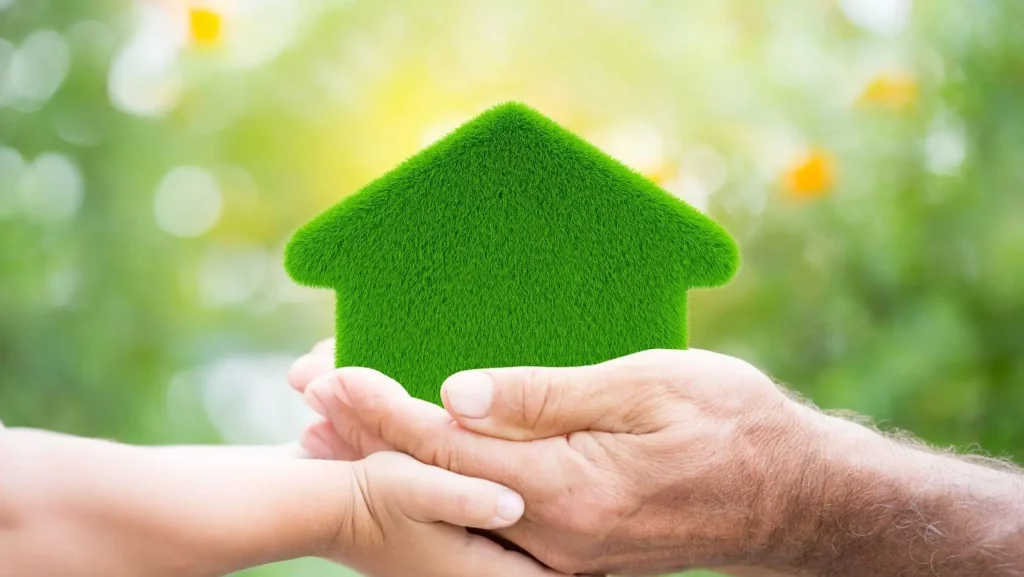In today’s world, there is an increasing need for sustainable living practices. As we strive to protect our environment and reduce our carbon footprint, one area that has gained significant attention is the construction and design of
eco friendly homes. These homes are designed with a focus on reducing energy consumption, utilizing sustainable materials, conserving water, and promoting healthy indoor air quality. In this article, we will explore the numerous benefits of eco friendly homes and how they can contribute to a more sustainable future.
Benefits of Eco-Friendly Homes
Energy Efficiency in Eco-Friendly Homes
One of the primary benefits of eco-friendly homes is their superior energy efficiency. These homes are designed to minimize energy consumption by incorporating various features such as
solar panels, efficient insulation, and energy-efficient appliances. By reducing the reliance on non-renewable energy sources, eco-friendly homes help lower greenhouse gas emissions and combat climate change. Additionally, homeowners can enjoy substantial cost savings on their energy bills, making eco friendly homes an economically viable choice in the long run.
Sustainable Materials Used in Eco-Friendly Homes
Another key aspect of eco-friendly homes is the use of sustainable materials in construction. Traditional homes often rely on materials that are harmful to the environment, such as concrete and PVC. In contrast, eco-friendly homes utilize renewable materials like bamboo, reclaimed wood, and recycled metal. These materials not only have a lower environmental impact but also contribute to a healthier indoor environment by reducing the presence of harmful chemicals and toxins.
Water Conservation in Eco-Friendly Homes
Water scarcity is a growing concern in many parts of the world. Eco friendly homes address this issue by incorporating water conservation features. Low-flow fixtures, rainwater harvesting systems, and graywater recycling are some of the techniques used to minimize water usage. By conserving water, eco friendly homes help alleviate the strain on local water resources and contribute to a more sustainable
water management system.
Indoor Air Quality in Eco-Friendly Homes
Indoor air quality is often overlooked but crucial for maintaining a healthy living environment. Traditional homes can have poor air quality due to the presence of volatile organic compounds (VOCs) emitted by various building materials and furnishings. Eco-friendly homes prioritize the use of low VOC materials and promote proper ventilation systems to ensure clean and fresh indoor air. This significantly reduces the risk of respiratory problems, allergies, and other health issues associated with poor air quality.
Cost Savings of Eco-Friendly Homes
While the initial cost of building or renovating an eco friendly home may be higher than that of a traditional home, the long-term cost savings are considerable. Energy-efficient features, such as solar panels and high-quality insulation, reduce the need for external energy sources and result in lower utility bills. Additionally, the use of sustainable materials often requires less maintenance and replacement, saving homeowners money in the long run. Over time, the investment in an eco-friendly home proves to be financially beneficial while also contributing to a sustainable future.
Examples of Eco-Friendly Homes
To better understand the concept of eco friendly homes, let’s explore some real-life examples. The “Hobbit House” in Wales is a remarkable example of sustainable architecture. It is built into a hillside, utilizing natural materials and incorporating renewable energy sources. Another inspiring example is the “ZeroHouse” in California, which is entirely self-sufficient in terms of energy and water usage. These examples showcase the innovative designs and technologies that can be implemented in eco-friendly homes to create beautiful and sustainable living spaces.
Tips for Building or Renovating an Eco-Friendly Home
If you are considering building or renovating an eco-friendly home, here are some valuable tips to guide you:
- Work with an experienced architect or builder who specializes in eco-friendly design.
- Prioritize energy-efficient features such as solar panels, LED lighting, and efficient insulation.
- Opt for sustainable materials like bamboo flooring, recycled glass countertops, and reclaimed wood.
- Install low-flow fixtures and consider rainwater harvesting or graywater recycling systems.
- Maximize natural ventilation and utilize energy-efficient windows and doors.
- Incorporate proper waste management systems, including composting and recycling.
By following these tips, you can ensure that your eco friendly home is not only environmentally conscious but also aesthetically pleasing and comfortable to live in.
Conclusion: Embracing a Sustainable Future with Eco-Friendly Homes
In conclusion, eco-friendly homes offer numerous benefits that contribute to a more sustainable future. From energy efficiency and the use of sustainable materials to water conservation and improved indoor air quality, these homes provide a holistic approach to sustainable living. While the initial investment may be higher, the long-term cost savings, environmental impact, and health benefits make eco friendly homes a wise choice. By embracing the concept of eco friendly homes, we can all play a part in building a sustainable future for generations to come.
